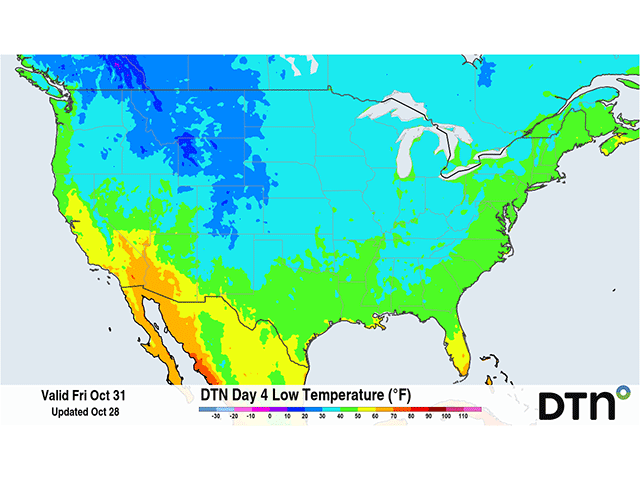
Thousands of wildfires burned across Canada in 2025, and weather conditions contributed to a record area of land affected by wildfires. Smoke from the fires spread even into several U.S. states.

Thousands of wildfires burned across Canada in 2025, and weather conditions contributed to a record area of land affected by wildfires. Smoke from the fires spread even into several U.S. states.

The coldest air of the season is forecast to descend into the Midwest this weekend. Some areas may not make it above zero Fahrenheit on Saturday.

Despite arctic cold, tar spot has adapted to survive Midwest winters.

Possibly the strongest clipper in a train of many across the northern U.S. will move through on Tuesday and Wednesday of this week.

Corn yields may drop as much as 40% by the end of this century due to climate change impact.

Multiple fronts and clipper systems will reinforce the cold air east of the Rockies throughout the week.

October 2025 world temperatures were the third highest on record.

A big winter storm will spread multiple impacts across the country from Friday through Sunday, including heavy rain and snow and will be followed by a burst of arctic air.

A front-loaded winter is in the forecast as La Nina peaks early and fades throughout winter.

A burst of cold, arctic air is forecast to move through the U.S. during Thanksgiving week. Additional bursts of cold air are expected through December.

Light rain in November and emergency government assistance have China's top-producing wheat provinces in the home stretch on seeding the 2025-26 crop.

A couple of larger storm systems are forecast to bring through quite a bit of rain to the Central and Southern Plains up through the Ohio Valley, providing beneficial moisture for winter wheat.

A recent study that looked at the county-level impacts of derechos on corn and soybean crop conditions and yields found the impacts of derechos are complex and variable.

Reduced sun and favorable conditions for pests and diseases may have dropped yields by 25% in York County, Nebraska.

While the first half of November has been defined by clipper systems, the second half may be defined by bigger systems with more widespread impacts.

October rain in the North China Plain was the heaviest in 60 years. The record rainfall fell on a region in China which accounts for about 60% of the country's wheat production and almost one-third of its corn output.

The first major lake-effect snowfall event of the winter season is possible across the Great Lakes this weekend into early next week.

Several clippers continue to move across the country this week, but one this weekend will be able to pull down some cold air to the eastern half of the country.

Several fast-moving weather systems will move through the U.S. in early November.

A front moving across the southern tier of the country will bring some chilly weather, including areas of frost.
DIM[2x3] LBL[blogs-ag-weather-forum-list] SEL[[data-native-ad-target=articleList]] IDX[2] TMPL[news] T[]
DIM[2x3] LBL[blogs-ag-weather-forum-list-2] SEL[[data-native-ad-target=articleList]] IDX[5] TMPL[news] T[]